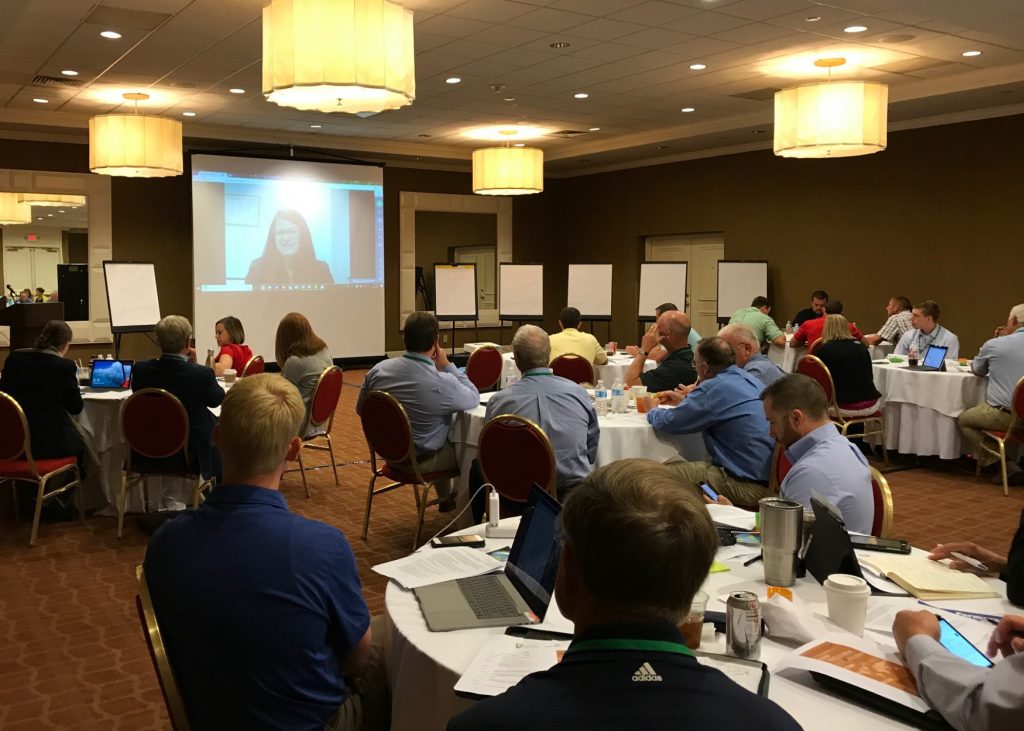Nearly 50 corn state leaders convened in St. Louis, Missouri, last week to arm themselves with the knowledge and skills needed to advocate for trade. A mixture of tenured trade champions, farmers newly engaged on trade issues and state corn organization staff attended the 2018 “trade school,” conducted by the U.S. Grains Council (USGC) and the National Corn Growers Association (NCGA).
“Our goal with this event was to provide farmers involved in their association and checkoff activities with the information they need to track trade developments and the confidence to engage deeply on trade-related issues,” said Melissa Kessler, USGC director of strategic relations, who helped organize the event. “Coming together as a corn community to talk specifics about trade helps create informed advocates and hone the critical voices we need today on export policies.”
The trade school encouraged farmers in attendance to engage in ongoing trade issues by providing extensive data on the economic and foreign policy implications of trade and walking them through activities intended to help them feel comfortable telling their own stories about the impact of trade.
“The update on current status of trade discussions, dialogue between different states and listening to speakers who know trade inside and out provided a useful overview of the dynamics at play in maintaining and expanding trade,” Kessler said. “Helping these influencers become more knowledgeable enables them to take advantage of the opportunities to talk about trade to their neighbors, their communities and beyond.”
In 2016, U.S. food and agricultural exports reached more than $135 billion, according to the U.S. Department of Agriculture’s Foreign Agricultural Service (USDA’s FAS), supporting more than 1 million American jobs and accounting for more than 32 percent of gross farm income.
A study by Cornell University’s Dr. Harry Kaiser demonstrated the statistically significant, positive impact of market development activities for the U.S. grains industry conducted by the Council, including returns between 2010 and 2014 like:
- $19.76 in federal and state tax revenue for every dollar spent by taxpayers.
- Increased value of U.S. grain exports by an average of $1.71 billion per year.
- 24,000 full-time jobs and more than $1.12 billion in labor income each year.
- Increased U.S. gross domestic product by $5 billion per year, on average.
The event in St. Louis is part of an ongoing effort by the Council and partner organizations to offer resources and training to members of the grain value chain. Other pieces of this work have included trade school webinars hosted with NCGA and outreach at Council meetings, making information available to member organizations and offering tools for trade diplomacy online at www.grains.org/trade-toolkit.
Learn more about trade school here and why trade is so important here.
About The U.S. Grains Council
The U.S. Grains Council develops export markets for U.S. barley, corn, sorghum and related products including distiller’s dried grains with solubles (DDGS) and ethanol. With full-time presence in 28 locations, the Council operates programs in more than 50 countries and the European Union. The Council believes exports are vital to global economic development and to U.S. agriculture’s profitability. Detailed information about the Council and its programs is online at www.grains.org.

